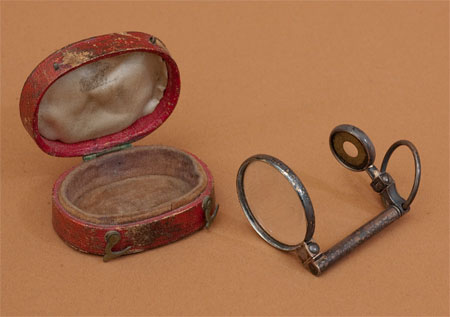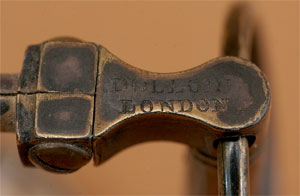This is a portable magnifying loupe for field work made by John Dolland of London. It consists of one large lens and a smaller sample platform, and a finger ring at one end. The platform is a negative lens and seems to have the dual function of acting like the first lens of a simple telescope. The cylindrical frame consists of two concentric tubes so that the instrument can be elongated for focusing. The large front lens (dia = 3.0cm, f=10.5cm) has an approximate magnification of 2–3x. It can be used as a simple specimen magnifier. With the negative lens in place the user can extend the frame and use the two lenses in tandem as a telescope. They have the magnification of approximately 2.5x.
John Dollond Sr (1706-1761) was the inventor of the achromatic doublet lens that solved the problem of chromatic aberration in telescopes and microscopes. He joined his son Peter in 1752 first to produce achromatic lenses and later to manufacture a wide range of mathematical, optical, and philosophical instruments including sundials, telescopes, barometers, and microscopes. Over the years there have been a number of "Dollond" companies, and there are a great many instruments in collections that are engraved "Dollond, London", as is this microscope.
The instrument can be folded to be stored in its red leather case. The instrument length ranges from 4.3–7.5cm.
Featured 02/2014







